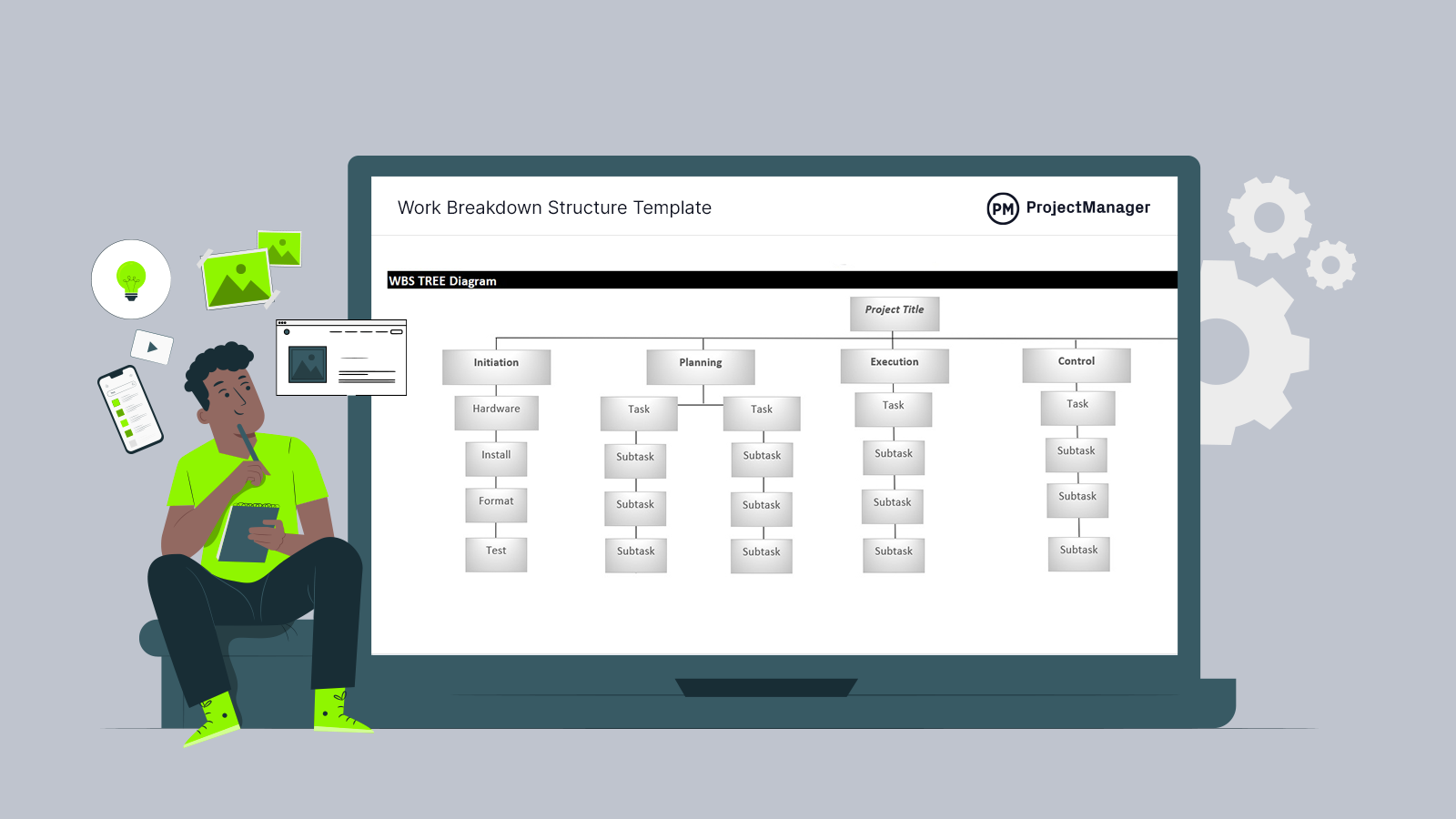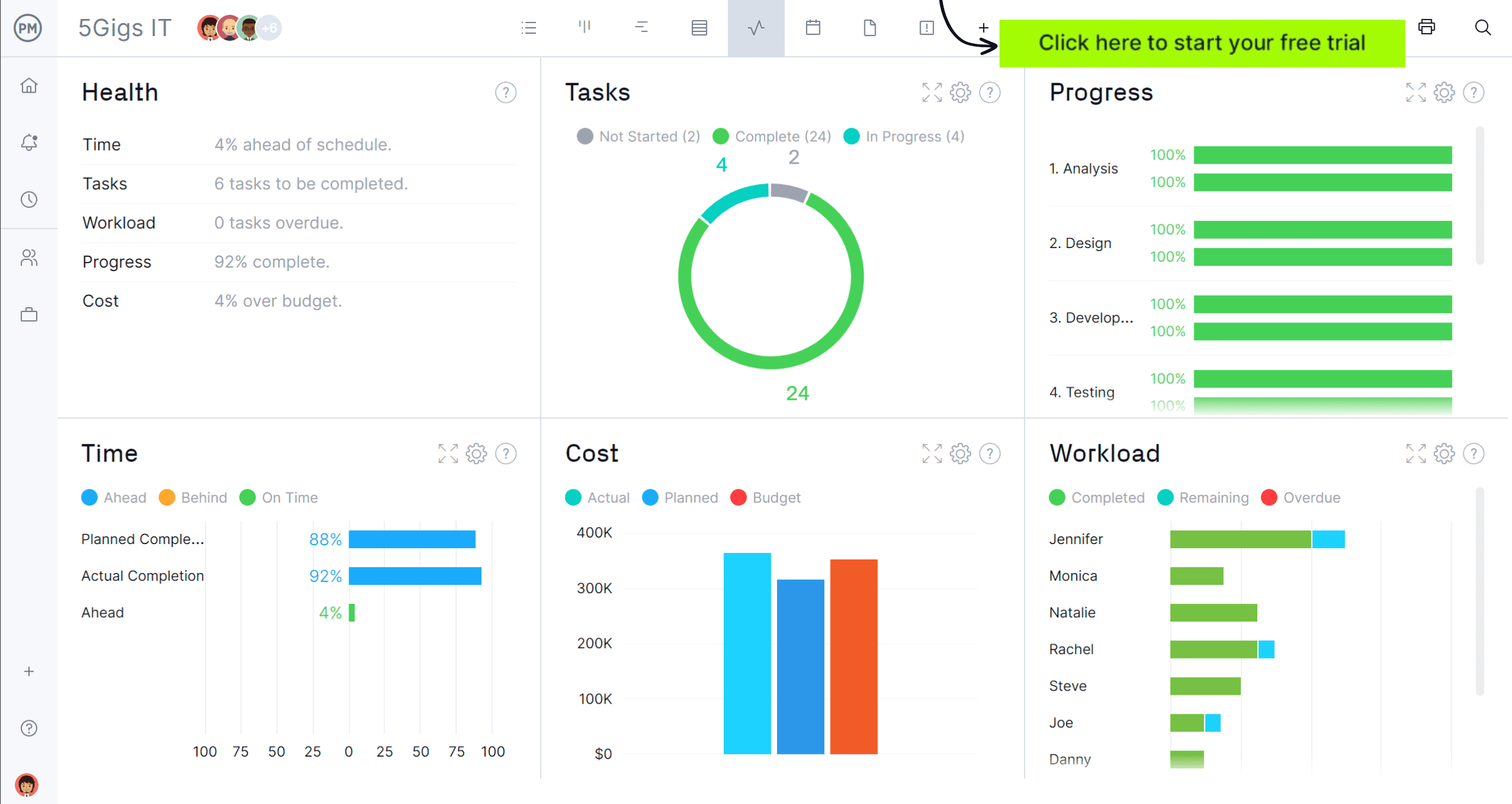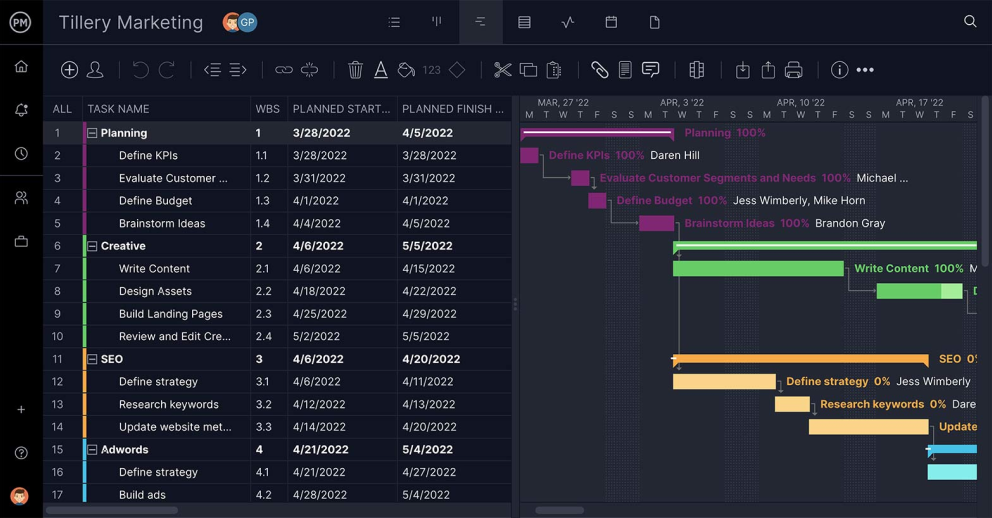For a project to be successful, you need effective work management. By providing structure to your project scope, you get some control over the project work and increase the chance that you’ll succeed.
Before you get started, you need to figure out every step in the project scope. That’s where a work package comes in.
What Is a Work Package?
A work package is a sequence of activities that leads to a deliverable when using a work breakdown structure (WBS). to map your project scope. In a sense, it’s a sub-project of the larger project.
There’s a difference, however, between a work package and an activity in a project. A work package is at a higher level in the WBS hierarchy than an activity.
This distinction is important for project managers, but not critical to the success of a project. Whatever language you use to define these building blocks as you fill in your WBS, they all lead to the same destination—the completion of your project.
Work packages are used in earned value management projects to integrate schedule, cost and scope management data to measure project performance.

Get your free
Work Breakdown Structure Template
Use this free Work Breakdown Structure Template to manage your projects better.
Get the Template
The Benefits of Work Packages
The main benefit of work packages is that as part of a work breakdown structure, they break down larger projects into more manageable work. Projects often fail because they don’t account for all the work needed to deliver a product or service, which is a common mistake in project scope management that later affects the project schedule and budget.
Breaking down work into these smaller segments known as work packages, lets you assign work to multiple team members. This work can be done at the same time or sequentially. Following the steps and completing work by a set deadline lets teams work on various parts of the project.
To go even more granular, work packages help with the development of the WBS. Project managers can keep the project consistent and make more effective assignments. They show whether the work leads to a milestone, identify risks and how to mitigate them, help with estimating costs and much more.
Once you’ve figured that out, you’ll need to assign and monitor the work. ProjectManager is online software that does this in real time. The live dashboard provides instant status reports for a high-level view of the progress and performance of your project. Try ProjectManager today for free.

What Is Included in a Work Package?
Work packages each have a small piece of the larger project management data associated with them:
- A budget: A budget is necessary to show how much money is allocated to this particular package. It’s also essential to track prices and ensure the project isn’t going over budget.
- Deadlines: This gives project managers a schedule baseline to measure the progress of the work.
- Risks: You must identify risks and create a mitigation plan. You need to monitor progress, too, so issues can be identified and dealt with quickly.
- Task priority: Your work breakdown structure will allow you to establish the level of priority of each task in your work packages. This WBS hierarchy lets teams know what must be done, and where they need to focus. Stakeholders don’t need to know details, but they also must be kept updated on the big picture.
What are the Characteristics of a Work Package?
Work packages generally share a certain number of characteristics. This includes the type of work you’re doing, whether that’s marketing, programming or some other discipline.
Naturally, you want to define the outcome of the tasks associated with the work package, where those tasks take and how much time to provide for completion. There are also the resources necessary to execute the tasks, which can be technology or material-based.
Each work package should have a team leader assigned to it. There will also be stakeholders who have a vested interest in the execution of that particular work package. You need to identify them and keep them updated on the progress of the work.
5 Essential Tips for Work Packages in Project Management
The following are a handful of project management tips to help with work packages:
- When defining the work breakdown structure, don’t neglect to bring the team members into the process. Your team is on the front lines of the work. They’re your most valuable resource when mapping out your project scope and identifying risks.
- Work packages are an excellent way to get an idea of your overall costs and the time required to execute the project. Adding up all the packages in your work breakdown structure gives you more accurate estimates.
- It’s best to have one person accountable for each work package. They will own the management of the work package and be responsible for reporting to the project manager.
- Work packages should be one of a kind. They lead to a deliverable, and therefore shouldn’t be repeated in other places on the WBS.
- Keep your work package doable within a specific timeframe. It should be completed in no less than a week and a half. You want to execute them within the timeframe of your reporting schedule.
How ProjectManager Helps With Work Packages
A work package is a mini-project, so you need project management software to manage it. ProjectManager is online software that gives you real-time data to make more insightful decisions as you manage your project scope.
Create Your Work Package on a Gantt Chart
Project managers will love the Gantt chart view, which organizes all the packages on a timeline, links dependencies and sets milestones. You can assign, attach files and even set a schedule baseline. Now you can compare your actual-to-planned effort to stay on schedule and keep to your budget.

Track Work Package Progress
Monitoring your progress and performance is how you stay on track. Use our real-time dashboard to get a high-level view of what your team is doing. Unlike other software, there’s no configuration needed. ProjectManager’s dashboard automatically calculates project status data and displays it.

Keep Stakeholders in the Loop
Stakeholders need to stay updated on what’s happening, too. One-click reporting features make it easy to share data with them, whether they want it printed out or attached as a PDF. All reports can be filtered to focus on only what the stakeholders are interested in.

ProjectManager is award-winning software that organizes work for greater productivity. Use our software to get real-time data, keep your team connected and always know your actual-to-planned effort. Join thousands of teams who are already using ProjectManager. Try it free today!

